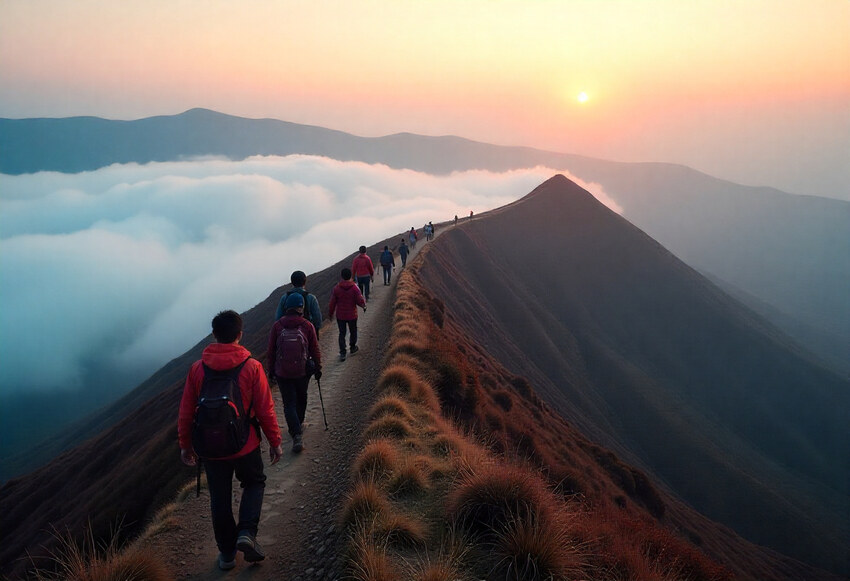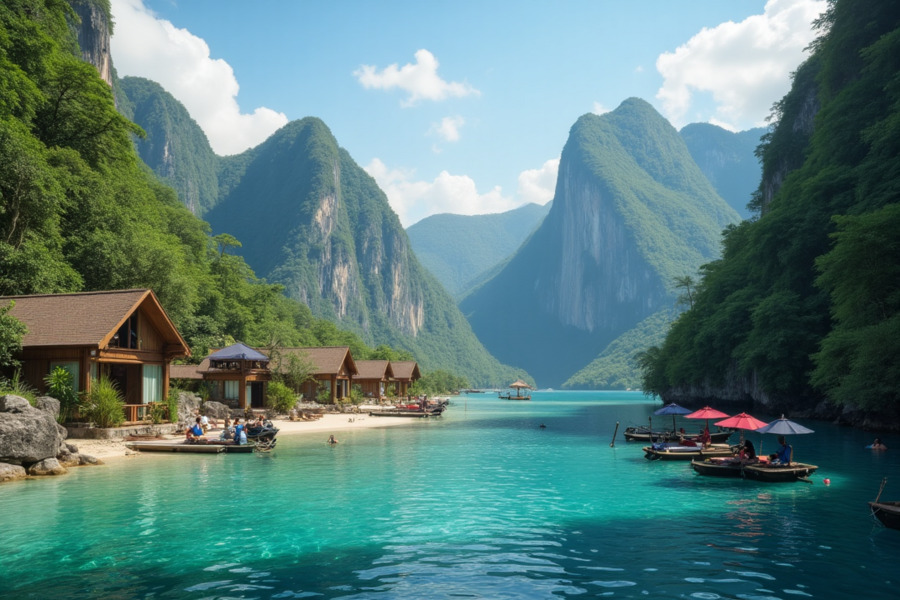≡-South Korea’s Tourism Soars with Nearly Fifty Percent Growth, But Overtourism Challenges Loom Over Iconic Destinations Like Bukchon Hanok Village and Jeju Island – Viral of Today
<> Viral of Today <>
Home » South Korea Travel News » South Korea’s Tourism Soars with Nearly Fifty Percent Growth, But Overtourism Challenges Loom Over Iconic Destinations Like Bukchon Hanok Village and Jeju Island Published on
September 7, 2025South Korea’s tourism sector has skyrocketed with nearly fifty percent growth in 2024, driven by the global allure of K-pop, K-drama, and vibrant shopping experiences. This surge has made South Korea one of the fastest-growing tourist destinations worldwide. However, with this remarkable rise in visitors comes the challenge of overtourism. Iconic destinations like Bukchon Hanok Village and Jeju Island are feeling the pressure of overcrowding, with issues such as noise, pollution, and the strain on local infrastructure, raising concerns about preserving the cultural and environmental integrity of these beloved sites.In 2024 South Korea has recovered 16.3 million international arrivals, an astounding 94% of what the country received in 2019. This number represents a major tourism milestone in the wake of the pandemic and attests to the successful global repositioning of the country post-COVID. The dramatic recovery in arrivals demonstrates the country has established itself as a global tourism destination, and travelers from all over the world are keen to experience South Korea’s vibrant culture and modern attractions.One major reason for South Korea’s increase in tourism is owing to Chinese travelers, who are the largest group of foreign tourists.. K-Pop is perhaps one of the biggest reasons for the Chinese travelers’ interest in South Korea’s pop culture. Many tourists wish to visit the filming sites of the K-dramas while also taking part in the country’s famous shopping. Other major sites that are becoming common stops for Korean culture tourists are Seoul’s Namsan Tower, traditional Bukchon Hanok Village, and Jeju Island.These phenomena has led South Korea to target policies aimed at expanding chinese sightseeing. As of Sept 29, group Chinese tourists will no longer need a visa to enter the country temporarily. This is designed to enhance the connection between the two countries while promoting growth in the tourism sector. Due to the increases in Chinese tourists, the tourism sector, and its related industries, such as Retail, Transportation , and Hospitality, are anticipated to gain a lot.Though an increase in international travelers has proven good for the country’s economic situation, South Korea has also been managing the negative aspects of an increase in tourism. With the increase of tourism, certain places, especially the most popular ones, are sustaining the effects of the crush of people. Places, like Bukchon Hanok Village, and even the dreaded Jeju Island are starting to face the problem of being crowded, and that in turn, has frustrated locals, and is also threatening the sustainability of the sites.Out of its formerly quiet and residential vibe, the Village of Bukchon Hanok has now turned into a spectacle of modernization. People have increased their coming to the area because of the interesting traditional villages, the ‘hanok’ houses, and the small narrow lanes. Due to the increased people coming to the area, there has also been increased complaints, in the form of noise, and litter, and privacy of the uber crowded area have been considered. Some locals have come up with an effective solution of capping the number of people that come into the area. This will not just help in the reduction of crowding, but will also help preserve the residential nature of the area.The stunning Jeju Volcano and Lava Tubes is a UNESCO site which is the very definition of a natural wonder with greenery and volcanoes working symbiotically. Jeju has always attracted visitors, but there charm is fading due to deteriorating infrastructure and natural resources depletion. There has also been a noticeable increase in strain on local services. All of this has raised deep concerns on the impact of Jeju’s fading ecology and the need to preserve Jeju for future visitors. It is obvious, some form of sustainable tourism has to be imposed.The Duanla tourism lets the Republic of Korea continue to expand as a go to nation for travel on the globe. However, this growth comes with a price due to excess mass tourism. The nation as a whole is better off with plans that have implemented the negative repercussions of over tourism. Highlighting the uncharted gems of Korea, along with proper boundaries, optimism to travel and striking tourism indicators, restrictions on dense structures have to be in place for the new.Besides overtourism, South Korea travel services will need to evolve for the travel industry’s new pandemic realities. These shifts will include the growth of local travel, the higher demand for eco-friendly tourism, and the newly rising preference for fully customized and deeper experiences. The incorporation of these trends will also represent South Korea’s commitment to addressing the challenges of mass tourism and maintaining its prestige as a top travel destination.South Korea’s tourism has surged with nearly fifty percent growth in 2024, fueled by global interest in K-pop and K-drama. However, iconic destinations like Bukchon Hanok Village and Jeju Island face overtourism challenges, with overcrowding and environmental strain threatening their preservation.To conclude, the ongoing rapid expansion of South Korea’s travel services is cementing to the nation its place as one of the most visited countries across the globe. The tremendous growth of attractions and a key source of South Korea’s tourism, particularly from the short-haul overseas destination of China, has played a formidable role in South Korea’s post-COVID economic recovery. Albeit the new economic activities brought from tourism, the problem of overtourism has also come to the fore, with South Korea’s overused tips, the Bukchon Hanok Village and Jeju Island, becoming iconic of crowding. With the advocacy of responsible travel, South Korea is capable of maintaining its position as a prominent international tourism market while keeping the culture and nature for future generations to come.
This information will surprise you!
See also
- Read until the end to discover everything.
- Important information you need to know.
- Interesting facts and helpful tips.
Conclusion
Did you enjoy the news? Keep following us daily!













